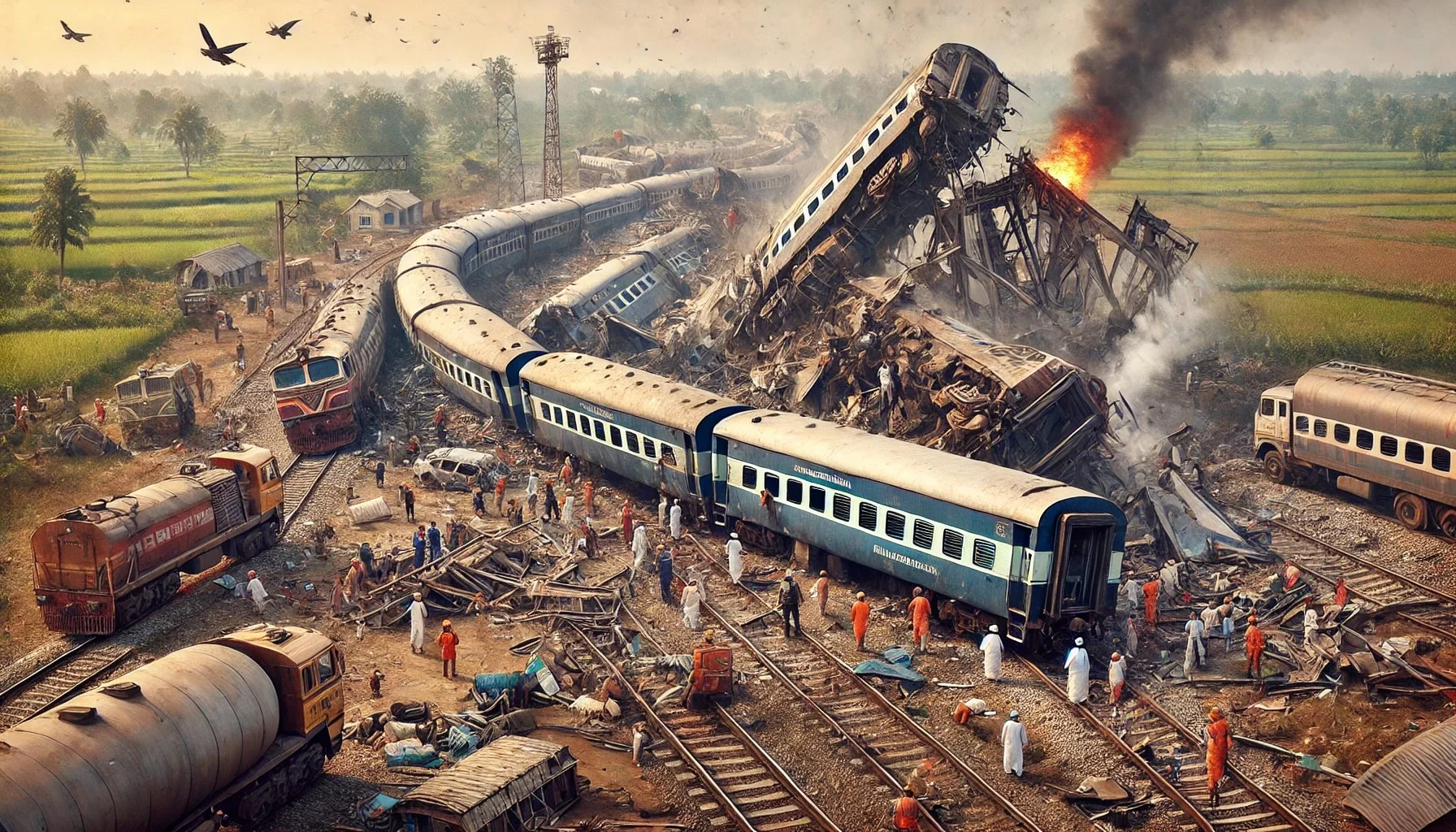
The Gaisal Train Disaster
by: The Calamity Calendar Team
August 2, 1999
The Fateful Morning of August 2, 1999
In the early hours of August 2, 1999, the small town of Gaisal in West Bengal, India, became the site of an unimaginable tragedy. The Brahmaputra Mail, traveling from Dibrugarh to Delhi, and the Awadh-Assam Express, heading from Guwahati to Amritsar, were both running late. As they hurtled towards each other on the same track, a catastrophic error in the signaling system set the stage for one of the worst train disasters in Indian history.
A System Under Strain
The Indian railway system in the late 1990s was under immense pressure. Outdated infrastructure, inadequate safety measures, and a rapidly growing number of passengers and freight had created a precarious situation. Many railway stations, including Gaisal, relied on signaling systems prone to errors and malfunctions. Despite the clear risks, the volume of traffic continued to increase, stretching the already fragile system to its limits.
A Deadly Error
At around 2:00 AM on August 2, a signaling error allowed both the Brahmaputra Mail and the Awadh-Assam Express to proceed on the same track. The trains, each carrying hundreds of passengers, were oblivious to the impending danger. As they approached Gaisal station at high speeds, the collision became inevitable. At approximately 2:30 AM, the two trains collided head-on with tremendous force, causing a scene of utter devastation.
Thanks for subscribing!
The Impact and Immediate Aftermath
The Collision
The collision’s impact was catastrophic. The first few coaches of both trains were mangled beyond recognition, telescoping into each other and trapping passengers inside. Fires broke out in the wreckage, further complicating the desperate rescue efforts. The quiet night was shattered by the sounds of the crash and the cries of the injured and dying.
Rescue Efforts
Local villagers were the first to respond, rushing to the scene to help survivors. Railway staff, police, medical teams, and disaster response forces soon joined them. The scale of the disaster was overwhelming, with bodies and debris scattered across the tracks. Rescue teams worked tirelessly, cutting through twisted metal to reach trapped passengers and transporting the injured to nearby hospitals.
The Human Cost
Casualties and Injuries
The Gaisal train disaster claimed approximately 285 lives, with over 300 people injured. The exact number of casualties could never be precisely determined due to the extent of the damage and the condition of the bodies. Families were torn apart, and the impact of the tragedy reverberated throughout the country.
Property Damage and Economic Impact
The collision caused significant damage to the trains and the railway infrastructure at Gaisal station. Although exact monetary estimates were not well-documented, the disaster disrupted rail services in the region for several days. This disruption affected both passenger travel and freight transport, leading to considerable economic losses.
Response and Recovery
Immediate Response
The Indian Railways, along with the state government of West Bengal, coordinated extensive rescue and relief efforts. Hospitals in the surrounding areas were mobilized to handle the large influx of casualties. Despite the chaos and devastation, the response was swift and comprehensive, with a focus on providing medical care and support to survivors and the families of the deceased.
Policy and Safety Changes
The Gaisal train disaster underscored the urgent need for significant improvements in railway safety and infrastructure. In the wake of the tragedy, there was increased scrutiny of the signaling systems and a push for stricter safety protocols. Indian Railways undertook several measures to modernize signaling equipment, enhance track maintenance, and improve communication systems to prevent such accidents in the future.
Lessons Learned and Future Measures
Investigations and Findings
Investigations into the disaster revealed that human error in the railway signaling system was the primary cause. The inquiry emphasized the need for technological upgrades and better training for railway personnel. The findings highlighted systemic issues that required immediate attention to ensure the safety of passengers and the efficient operation of the railway network.
Technological Upgrades
Since the disaster, Indian Railways has made continuous efforts to modernize its network. Advanced signaling technologies and automated systems have been adopted to reduce the likelihood of human error. These technological upgrades aim to create a more reliable and safer railway system, capable of handling the growing demands placed upon it.
Ongoing Safety Measures
Indian Railways continues to focus on improving safety standards. Ongoing projects aim to eliminate unmanned level crossings, enhance track safety, and introduce collision avoidance systems. These measures are part of a broader strategy to prevent future accidents and ensure that the railway system can meet the needs of the nation safely and efficiently.
Conclusion
The Gaisal train disaster remains a poignant reminder of the devastating consequences of infrastructural neglect and human error. While the tragedy brought immense sorrow and loss, it also catalyzed essential reforms in the Indian railway system. Through continued efforts to modernize and enhance safety, Indian Railways strives to honor the memory of those lost by preventing such a disaster from ever occurring again.
Stay in the Loop!
Become a Calamity Insider and get exclusive Calamity Calendar updates delivered straight to your inbox.
Thanks! You're now subscribed.